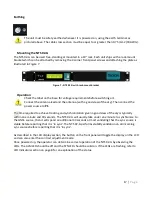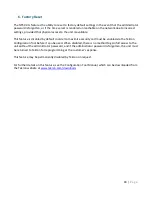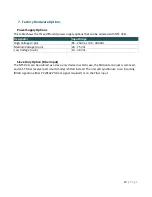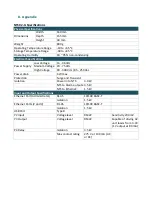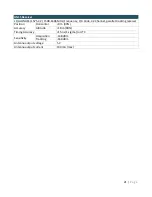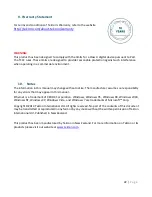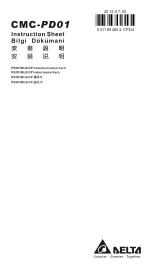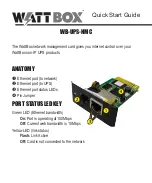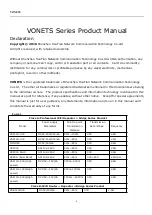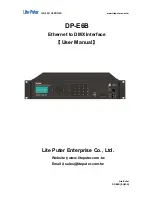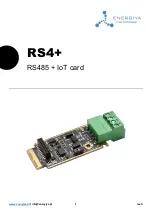
3.
Back Panel
Examples of the NTS 02-G back panel are shown below (see figures 6 and 7). The unit appearance varies
depending on the types of Ethernet modules fitted (orderable factory options).
Figure 6 – Rear panel of NTS 02-G with copper outputs
P1 Power Input
Power is applied to the NTS 02-G via
P1
, a 5.08 mm 3-pin connector. DC power should be
applied to pins L and N. Despite the L and N markings, DC polarity is not critical, but only
Pin L is fused internally. Maximum steady state power consumption is 6 Watts, and surge
protection is provided. Both the electronics and case are isolated from the power supply
input, enabling the use of positive earth, negative earth, or fully floating supplies. The
mating connector (supplied) accommodates wire sizes up to 1.5 mm
2
. The input voltage
range is marked on the label located below the
P1
connector.
Check the label on the unit base for power supply voltage ratings before applying power.
Earth Stud (M4 Nut)
An M4 bolt (to chassis) is provided for earthing of cable shields. It is recommended
that the bolt is bonded to earth using a cable terminated with a ring terminal. This
provides a safe discharge path in the event of a short circuit or high voltage transient.
Ant: Antenna Connector (SMA Connector)
The “ANT” antenna input provides an interface for an external active antenna. The
antenna should be connected using a high quality, low-
loss 50 Ω coaxial cable. The
centre conductor supplies 5 VDC (100 mA max.) to power an active antenna.
Care should be taken to ensure that the connector is not cross threaded when attaching the
antenna lead-in cable. The connector should be tightened firmly by hand only. Do NOT over-
tighten! Ensure the antenna SMA male connector center pin is straight before plugging in.

















